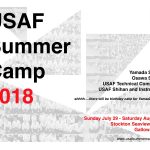 This is a friendly reminder that the deadline for registering for camp and reserving a room at the discounted rate is 1 WEEK AWAY – FRIDAY JUNE 22nd. Please spread the word, and forward to your dojo members and friends.
This is a friendly reminder that the deadline for registering for camp and reserving a room at the discounted rate is 1 WEEK AWAY – FRIDAY JUNE 22nd. Please spread the word, and forward to your dojo members and friends.Archives for 2018
Summer Camp Deadline is 1 Week Away!
 This is a friendly reminder that the deadline for registering for camp and reserving a room at the discounted rate is 1 WEEK AWAY – FRIDAY JUNE 22nd. Please spread the word, and forward to your dojo members and friends.
This is a friendly reminder that the deadline for registering for camp and reserving a room at the discounted rate is 1 WEEK AWAY – FRIDAY JUNE 22nd. Please spread the word, and forward to your dojo members and friends.The Vocabulary of Conflict
 There was a time, during my youth and early adulthood, that I had only a one-word response to any conflict, a loud and forceful “NO.” In a lot of situations, there’s nothing wrong with a strong “NO!” as a means of stopping aggression. It’s a word whose delivery everyone should practice. But while that word had been useful in my formative years, as a boy and young man facing larger bullies, as a response to conflict in other situations, it lacked a certain capacity for nuance.
There was a time, during my youth and early adulthood, that I had only a one-word response to any conflict, a loud and forceful “NO.” In a lot of situations, there’s nothing wrong with a strong “NO!” as a means of stopping aggression. It’s a word whose delivery everyone should practice. But while that word had been useful in my formative years, as a boy and young man facing larger bullies, as a response to conflict in other situations, it lacked a certain capacity for nuance.
After all, it’s not only bullies looking to humiliate you that result in conflict; you can get into arguments with bosses, significant others, family members and friends, and for many of these situations, a loud, aggressive “no” is not the appropriate response. “No” stops things. “No” puts the brakes on processes that often need to occur in conflict, processes that lead to outcomes which could be desirable for both participants.
But as a young man, I didn’t know that. I knew that “no” kept me safe and out of trouble, and that was really the only response I had in a conflict. As a result, girlfriends tended to find me “hardheaded.” Work relationships could become fraught as well. In those days, I worked in a high-conflict profession. Because I had to frequently swallow my “no” to ensure I had a job the next day, long-held frustrations would eventually boil over.
It wasn’t until I was well into my study of aikido that I realized what I was learning at the dojo was not just an assemblage of techniques for responding to physical attacks. I was learning an entire philosophy and vocabulary of conflict. I was learning other words in addition to “no” that I could use in disagreements, physical, verbal or emotional.
I was also learning — and this is equally important — a certain selflessness in conflict. And by selflessness, I don’t mean it in the giving, loving, kind sense. I mean it in the direct sense of a lack of self, a no-self that allows you to focus in an objective, unemotional way on whatever you feel is attacking you.
When I began training in aikido, I would keep my awareness focused intently on the hand, stick, or sword that was trying to strike me. As I began to master the techniques of coping with the attack, my attention shifted to a slightly broader focus, to that of the attacker’s body. By placing my attention there, I became able to incorporate information about my attacker’s line of force, speed and direction into my calculations, allowing me to begin blending with the attack in a way I could not before. Most recently, my focus has shifted again — or, more accurately, diffused. I now “see” the attack as I look beyond the attacker with an unfocused gaze, my mind captured by nothing and taking in everything. Now, at last, I have the capacity to meet my attacker on his grounds with my intent.
This corresponded to an increasing range of physical responses. At first, I had “no.” Then I added “left, right or down.” Now, I have “I’m sorry, but nobody is here right now,” along with a host of adverbs and adjectives, modifiers that amend my response, tailoring it to an exact fit for the situation.
Outside of the training space of the dojo or the unlikely occurrence of a street brawl, the importance of what I’ve learned physically is how that has morphed into a more comprehensive emotional response as well. Spousal disputes — and when two people who are warriors at heart marry, you’re going to have them — become less emotionally destructive when both of us engage in creative conflict. As do conflicts with business associates, employees and others.
Worst-case scenario
In a worst-case scenario, when a strike reaches its intended target, I can choose to simply not be there. Sometimes being non-reactive to a verbal or emotional attack is the best response, allowing the attacker to expend their energy fruitlessly, and then, the smoke having lifted from the battlefield, negotiations can begin.
Sometimes, however, non-engagement only serves to increase the attacker’s ferocity, in which case other tactics are in order. A counter-attack, however, is not one of them. That’s part of the beauty of aikido, as it has no counter-strikes, no offensive moves. Yes, a punch or a kick may be administered as part of a defensive action, but that is only as a protective measure; and again, techniques may be done with or without such amenities, allowing you to control the level of the conflagration, even in the middle of a firefight.
So you redirect the aggression. Turn it toward the door, or the window, or redirect it back at them, allowing the attacker to experience the noxiousness of their own energy. Help them to leave (literal defenestration is not required) by the exit closest to the aim of their attack, giving them a chance to think things over before resuming hostilities. Often, this will turn down the heat enough that the conflict can then be resolved.
Martial arts alchemy
How do you learn these emotional techniques from training physical techniques in the dojo? Even having experienced the process, I can describe it no better than being some form of alchemy, where the physical activity rewires the circuits of your brain.
Certainly part of it is just being swung at. If you figure that on a typical night in the dojo I’m dealing with anywhere from 50 to 100 shots to the head, at some point being swung at loses its emotional gravity, and it’s just another fist in the air.
Another part is a sense of competence. If you feel competent in an activity, your fear of participating will decrease and your need to “prove yourself” will evaporate. This is important, as conflict makes up a small part of most people’s lives but can consume vast amounts of emotional resources.
The last part comes not simply from training in conflict, but specifically in the martial art of aikido. Aikido opens your mind to a third path of conflict; one where there is no winner, and no loser either. When you throw someone on the mat, you aren’t beating him; you aren’t somehow superior to her; you are simply taking their balance, which they offered to you in the attack, and moving it a few inches north, south, left or right. And you will have your turn to be thrown as well, a time in which you realize that to roll in response to your partner’s throw is protecting your own integrity, ensuring your safety for yourself. Self-care in the midst of an attack on someone? Well, that’s a novel thought. And there it goes, from your muscles, joints and sinews to the synapses of your brain.
These days, in this world, it is increasingly hard to avoid conflict. Hard not to provoke others or be provoked by them, while we’re all involved in a game of high stakes poker that determines the fate of ourselves and the larger world. We cannot end conflict, nor can we avoid it; in truth, conflict is a necessary tool for advancement, but only works if wielded wisely.
————
For more essays on aikido, follow Dr. Avery Jenkins at https://medium.com/@avery.jenkins
by Avery Jenkins
Litchfield Hills Aikikai
Ichi-go ichi-e
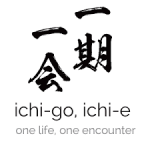 The white oak tip of a jo was shooting toward my throat and I was doing my best to curl under it before it hit me. My body was horizontal, roughly four feet above the mat. In my hands was a bokken. And all around me was a gasp from the seated students who were watching. The tsuki to my neck was as unexpected to them as it was to me.
The white oak tip of a jo was shooting toward my throat and I was doing my best to curl under it before it hit me. My body was horizontal, roughly four feet above the mat. In my hands was a bokken. And all around me was a gasp from the seated students who were watching. The tsuki to my neck was as unexpected to them as it was to me.
A few minutes earlier I had been called by Seichi Sugano Sensei to get a bokken and attack him with a kirioroshi. He stood on the mat holding a jo as the students all sat to watch his next demonstration. I lined up in front of him with a bokken and attacked. As my bokken descended toward his head, I expected him to get off line. But he wasn’t moving. My brain went into rapid alarm mode: “He-is-not-moving-he-is-not-moving-I’m-going-to-hit-Sensei!” I did not want to be the student who hit Sugano Sensei.
I knew what he intended to do. He had been talking about getting off the line and I had done enough demonstrations with him to know that’s what he planned: step off the line as I attacked and counter my strike with his jo.
But he wasn’t moving off the line and I stopped my cut before hitting him. Actually, I wouldn’t have hit him, not then or ever. And he wasn’t happy about my aborted strike. For such a generally soft-spoken man, Sugano Sensei’s voice could shake the entire dojo when he wanted to. That’s what he did then. He glared and shouted, “Strike me!” He was definitely annoyed.
I moved back into position. This time I would finish my cut and if I hit him, so be it. I had failed to give him a proper attack and this time I was going to make up for it.
I raised the bokken and before I could strike or even think, he suddenly did a jodan tsuki. I was being taught a lesson.
That’s how I found myself airborne, doing a kick-out so I could curl myself under the tip of his oncoming jo. I landed with the bokken frozen in mid-strike. My heart was hammering, adrenaline spiking, and I got up to attack him again as fast as I could.
This time as my bokken went for his head, he vanished from the line and countered with the jo, threading it between my wrists and throwing me. It was the technique I had expected the first time. We did this a few more times and then the class practiced the technique.
As went back to my partner, I was dazed. And I felt rotten. I’ve always felt it’s an honor to take ukemi for an instructor, especially Sugano Sensei and Yamada Sensei. I had let him down. And I had learned some important lessons.
First, it’s not the ukemi, it’s the attack AND the ukemi. I had failed to give Sugano Sensei a real attack. He knew what my abilities in ukemi were. Doing an unexpected jodan tsuki, he knew I could take the ukemi. But that’s just half of it. A good attack is equally important. And it wouldn’t have required an emergency kick-out.
More importantly, I had completely failed to understand how good his aikido was (sadly, Sugano Sensei passed away in 2010). He would have moved and I wouldn’t have hit him. I underestimated his skill. By extension I underestimated aikido. It’s at the top of my list of things to never do again. Ever.
I pondered this experience for a long time after that class. I guess I’m still pondering it years later. At the time it really hurt and I wondered if he would call me for a demonstration ever again. He did, of course. Training always goes on.
Ichi-go ichi-e (一期一会) is a saying that gets passed around martial arts dojos. In Japanese tea ceremony it’s typically translated “one lifetime, one meeting.” In this sense, each experience is unique, even if it’s something we experience every day, such as a cup of tea or the morning sun. In Japanese martial arts traditions it’s more often translated as “one encounter, one opportunity.” In this sense, when an attack occurs, especially with a lethal weapon, we may only have one opportunity to neutralize the attack.
Both interpretations apply to what I learned that day. Every time we practice it is a unique experience, whether we’d done a given technique once or ten thousand times. And each technique—each encounter—should have a life or death intensity. Sugano Sensei demonstrated the razor’s edge of budo, not only that day but every time he did aikido. It’s an encounter I will always remember.
Paul Alexander
New York Aikikai
2017 – USAF At A Glance
 We would like to share with you our 2017 year-end report that was circulated to USAF Chief Instructors. The formatting is for a trifold brochure, so please take that into consideration when you review the content. We hope you find it informative and wish you a wonderful 2018.
We would like to share with you our 2017 year-end report that was circulated to USAF Chief Instructors. The formatting is for a trifold brochure, so please take that into consideration when you review the content. We hope you find it informative and wish you a wonderful 2018.
New Year’s Recommendations 1-1-2018
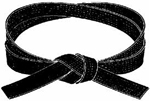 The following list comprises the 2018 New Year’s recommendations for 5th dan and above, and Shihan.
The following list comprises the 2018 New Year’s recommendations for 5th dan and above, and Shihan.
The recently posted list on Aikikai Foundation’s website can be found here: Kagamibiraki Grading 2018
Godan
- Maite Azcoitia – Gold Coast Aikikai
- Renee Bean – Chushin Aikido Center
- Driss Benmoussa – Aikido of Park Slope
- Luis Javier Burghi – Aikido of Park Slope
- Christy Calder – Aikido of Santa Barbara
- Anthony Chong – Aikido Curacao
- Michael Clair – Fudoshin Aikikai
- Sean Conley – Martha’s Vineyard Aikido Club
- Tim Cooper – Albany Aikido
- Jerome Curiale – Aikido of Red Bank
- Thomas Davis – Peachtree Aikikai
- Byron Eddy – Litchfield Hills Aikikai
- Wendall Gault – Aikido of Park Slope
- Philip Gendrault – San Francisco Aikikai
- Paul Glavine – Aikido Institute of Newfoundland
- Walter Gonzalez – New York Aikikai
- Colleen Hogan – Aikido Institute of Newfoundland
- Michel Hovan – Granite State Aikido Club
- Richard Morrison – Center Island Aikido
- Oleg Polishevich – Aikido of Park Slope
- David Ross – New York Aikikai
- James Shell – Aberdeen Maryland Aikikai
- Michael Terruso – Vineland Aikikai
- Aristedes Stamatelakey – Southland Aikido
- Alexandre Vieira – Skylands Aikikai
- Giovani Villafane – Chiheisen Aikido
- Mark Voohees – New York Aikikai
- Gennadiy Zolotarov – Aikido of Park Slope
Rokudan
- Elizabeth Albin – New York Aikikai
- David Childers – North Coast Aikikai
- Christopher Clark – Portland Aikido
- Jaime de Jesus – Midwest Aikido Center
- Motier Haskins – Fairfield Iowa Aikikai
- Ayal Joshua – Miami Aikikai
- Thomas Kelly – Midwest Aikido Center
- Eiji Kurashige – North Chatham Aikido Club
- Rock Lazo – Kenoshi Aikikai
- Harry McCormick – Florida Aikikai
- Susan Monroe – Aikido of Cincinnati
- Kenneth Pletcher – Midwest Aikido Center
- Wayne Sherman – Providence Aikikai
- Jeff Shimonski – Florida Aikikai
- James Soviero – Aikido of Red Bank
- Jay Stallman – Peachtree Aikikai
- G. Jeffrey Vernis – Palm Beach Aikikai
- Naomi Wentworth – Midwest Aikido Center
- Robert Whelan – Shodokan
Nanadan
- Raymond Farinato – Aikido of Fairfield County
- Irvin Faust – Albany Aikido
- Dennis Meno – Suncoast Aikido
- Edward Peteroy – USAF Academy Aikido Club
- Gordon Sakamoto – Northern Virginia Aikikai
- Darrell Tangman – Augusta Aikido Club
Shihan
- Josef Birdsong – Aikido of Austin
- David Birt – Davis Aikikai
- Glenn Brooks – Aikido of Scottsdale
- Don Dickie – Ottawa Aikikai
- Edmund Di Marco – Lake County Aikikai
- Chester Griffin – Long Beach Island Aikikai
- Eugene Monteleone – Suffolk Aikikai
- Laura Jacobs Pavlick – Litchfield Hills Aikikai
- Gentil Pennewaert – Newport Beach Aikikai
- Gustavos Ramos – Miami Aikikai
- Eliot Rifkin – Miami Aikikai
- William Xavier Staub – Waianae Coast Aikido
- Geraldine Tremblay – Waianae Coast Aikido
- Art Wise – Evanston Aikido Center
Aikido of Scottsdale, Arizona Opens New Dojo
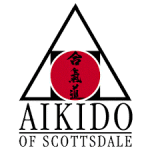 Aikido of Scottsdale and Glenn Brooks Sensei have yet another reason to celebrate. Just coming off the heels of their 20th anniversary this past year, they are now announcing the relocation and opening of their stunning new dojo. Designed and built by its wonderful members, construction took over 3 months to complete and at nearly 4,000 square feet, it is the largest Aikido dojo in Arizona.
Aikido of Scottsdale and Glenn Brooks Sensei have yet another reason to celebrate. Just coming off the heels of their 20th anniversary this past year, they are now announcing the relocation and opening of their stunning new dojo. Designed and built by its wonderful members, construction took over 3 months to complete and at nearly 4,000 square feet, it is the largest Aikido dojo in Arizona.
“Every detail was meticulously thought out, designed and created” states Brooks. “From the custom made sliding shoji doors and 20-foot long oak Kamiza to the bamboo flooring, concealed hinged doorways and satin-chrome hardware accents throughout. It’s a beautiful blending of traditional and modern Japanese design”.

Perfectly located in one of Scottsdale’s most popular outdoor destinations, hosting movie theaters, multiple restaurants, bars, ice cream shops and more. Foot-traffic of all ages is plentiful day and night. Aikido of Scottsdale is open 7 days/week and offers children, youth and adult classes.
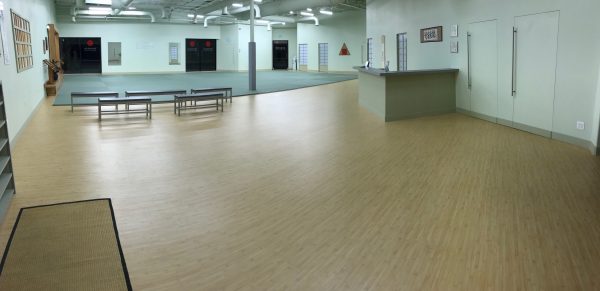
They cordially invite all Aikidoist to their upcoming 1 year anniversary seminar February 16-18, 2018.
Special guest instructor will be Rado Marinov Sensei, Chief Instructor, Aikido Shiyukan Federation of Bulgaria. They are directly affiliated with Aikikai Hombu Dojo. Rado Sensei teaches seminars regularly throughout Eastern Europe and Japan. This will be his first seminar in the United States.
Please visit Aikido of Scottsdale website for more information; www.AikidoofScottsdale.com
USAF Testing Requirements 2020
|
Effective August 1, 2018 new guidelines were implemented regarding yondan promotions by recommendation. These remain in place for 2020:
|
Click Here To View USAF Testing Requirements
Dan Promotions June 1, 2017 – December 31, 2017
 Test applications mailed to Aikikai Hombu Dojo between June 1st 2017 and December 31st, 2017 (some listings represent applications prior to Hombu approval)
Test applications mailed to Aikikai Hombu Dojo between June 1st 2017 and December 31st, 2017 (some listings represent applications prior to Hombu approval)
THIS LIST DOES NOT INCLUDE NEW YEAR’S RECOMMENDATIONS FOR 5TH DAN AND ABOVE
Shodan
- Cesar Balda- Water Oak Aikikai
- Jodi Ann Bocco – Aikido of Red Banks
- Thomas Brazil – Twin Cities Aikido Center
- Benjamin Conroy – Litchfield Hills Aikikai
- George DeMeglio – Peachtree Aikikai
- Adam Di Angelo – Aikido of Red Banks
- Erik Dutton- Water Oak Aikikai
- Steven Ehlen – Center Island Aikido
- Leandro Estrada – Peachtree Aikikai
- Eric Fernandez – NY Eastside Aikikai
- Denis Fitzgerald – Evanston Aikido Center
- Robert Flynn – Aikido of Red Banks
- Derek Foster – Portland Aikikai
- Maiko Frabosilio – Aikido of Dallas
- Clint Harper – Peachtree Aikikai
- Kenneth Harris – Aikikai of Philadelphia
- Smith Holt – Austin Aikikai
- Eduardo Holzer-Torres – Northern Virginia Aikikai
- Lance Hublick – Okolana Aikikai
- Ray Kilby – Asheville Aikikai
- Robert Knudsen – Aikido of Westchester
- Jason Koonce – Heaven and Earth Aikido
- John Koize – Aikido of Cincinnati
- Stan Lumish – Aikido of Red Bank
- Ricardo Manzo – Florida Aikikai
- Caitlyn McLuskie – Water Oak Aikikai
- Mark Miller- Evanston Aikido Center
- Claude Patrick Louvouezo – Portland Aikikai
- Daniel Martincic – North Coast Aikikai
- Mark Pit – Florida Aikikai
- Muhammad Rasheed – New York Aikikai
- Robert Reiss – Aikido of Ramapo Valley
- Robert Schwartz – New York Aikikai
- Luc Senatus – Dairyukai Aikikai
- Ryan Stephens – Aikido of Ramapo Valley
- Michelle Tanigaki – Aikido of Ramapo Valley
- Kalah Thompson – Aikido of Denton
- Thomas Vangi – Long Beach Island Aikikai
Nidan
- Omar Morales Andara – Florida Aikikai
- David Buhner – Asheville Aikikai
- Javier Calduch – Florida Aikikai
- Luc Carey – Montreal Aikikai
- Thomas Carlucci – Skylands Aikikai
- Nicholas DeLillo Jr. – Aikido of Westchester
- Arthur DiRocco – Portland Aikido
- Diana Edenburg – Florida Aikikai
- Edward Estrada – Water Oak Aikikai
- Eric Evenson – Twin Cities Aikido Center
- Joseph Giardina – Aikido of Westchester
- Lawrence Hambrick – Aikido of Cincinnati
- Joe Heim – Kenosha Aikikai
- Scott Fecteau – Lewiston Aikido/Willow
- Yoshi Fujiwara – Midwest Aikido Center
- James Gauthier – Portland Aikido
- Christopher Grimes – North Chatham Aikido
- David Grimes – North Chatham Aikido
- Robert Gutierrez- Twin Cities Aikido Center
- Siavash Haghtalab – New York Aikikai
- James Heggernes- Twin Cities Aikido Center
- Jackson Jarvis – Fairfield Iowa Aikikai
- Avery Jenkins – Litchfield Hills Aikikai
- Shella Keiholz – Aikido Center of Atlanta
- Crystal Kanesaka – New York Aikikai
- John Lawson – Suffolk Aikikai
- Jason Martell – Lunenburg Aikikai
- John Maya – New York Aikikai
- Nicholas Mills – Lunenburg Aikikai
- Stuart Pieloch – Aikido of Scottsdale
- Juan Pinheiros – City Aikido of Los Angeles
- Bruce Piotrowski- Twin Cities Aikido Center
- Clark Pomerleau – Aikido of Denton
- James Reed-Jones – Aikido of Prince Edward Island
- Rey Robles – Southern Maryland Aikikdo
- Abel Ruiz-Diaz – Miami Aikikai
- Andres Samoya – New York Aikikai
- Monica Sasaki – Florida Aikikai
- Christopher Scales – Long Beach Island Aikikai
- Victoria Selep- Twin Cities Aikido Center
- Robert Sinka – Aikido North Jersey
- Takara Suzuki – Portland Aikikai
- Jay Tall – Aikido of Park Slope
- Louis Torres – Palm Beach Aikikai
- John Tuohy – Northern Virginia Aikikai
- Howard Weitzman – Long Island Aikikai
- Jonathan Winterling – Aikido of Chester County
- Christi Wise – Evanston Aikido Center
- Marina Yeravinkina – New York Aikikai
- Mario Zilio – Florida Aikikai
Sandan
- Samiran Banerjee – Aikido Center of Atlanta
- Nicholas Benfaremo – Portland Aikido
- David Breniak – Aikido of Red Bank
- Isabel De La Vega – Florida Aikikai
- Patrick Dougherty – Aikido of Westchester
- Diane Dubois – Lewiston Aikido/Willow
- Charles Ellis – Aikido of Cincinnati
- Robert Groce – Aikido of Westchester
- Carlton Harris – Aikikai of Philadelphia
- Sherwin Heath-Retemyer – New York Aikikai
- Jennifer Henis – New York Aikikai
- Richmond Johnson – Aikido of New Paltz
- Will Kirkpatrick – Monadnock Aikikai
- Michael Klamer – New York Aikikai
- Jason Lambert – McGill Aikido
- Mario Lantandresse – Montreal Aikikai
- Reuven Lirov – Pinellas County Aikikai
- Eric Lopresti – New York Aikikai
- Edgar Martinez – Miami Aikikai
- Michael Napoli – Portland Aikikai
- Thomas Newcomen – New York Aikikai
- Kathleen O’Neill – Northern Virginia Aikikai
- Matthew Roder – Aikido of Fairfield County
- Elly Roland – Northern Virginia Aikikai
- Howard Scott – Montreal Aikikai
- Samantha Taitel – New York Aikikai
- Matthew Wavro – Aikido of Red Bank
- Andrei Yamshchikov – Florida Aikikai
Yondan
- Suliman Abdul Hakeem – Aikido of Greater Philadelphia
- Robert Bergman – Regent Park Community Aikido
- James Brumm – Newport Beach Aikikai
- Michael Cundall – Aikido fo Cincinnati
- Francisco De Los Cobos – Aikido of Dallas
- John Donnelly – Boston Aikikai
- Charles Dubois – Aikido de la Montagne
- David Gardener – Litchfield Hills Aikikai
- John Holt – Aikikai of Philadelphia
- Tom Ito – Southland Aikido
- Roderick Johnson – Aikikai of Philadelphia
- Michael Jones – Roaring Fork Aikikai
- Christopher Kerin – Aikido of Fairfield County
- Michael Livingston – Center Island Aikido
- Daryl Muranaka – Harvard Aikikai
- Clemon Richardson – Aikido of Park Slope
- Steve Sandage – San Francisco Aikikai
- James Shaffer – Long Beach Island Aikikai
- Edgar Shockley – Aikikai of Philadelphia
- Tinka Sloss – Aikido of Santa Barbara
- Rick Watson – Portland Aikikai
- Krzysztof Zawadzki – Aikido of Fairfield County
Wishing You A Happy New Year
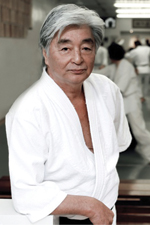 Once again, as I take a moment to look back at the year, I feel so lucky to be in good health and have the support of so many people in the USAF and around the world. I have traveled to so many seminars and continue to receive such a warm welcome. This of course inspires me to give as much as I possibly can to everyone on the mat, to show my appreciation for everyone who makes an effort to come and practice at these seminars.
Once again, as I take a moment to look back at the year, I feel so lucky to be in good health and have the support of so many people in the USAF and around the world. I have traveled to so many seminars and continue to receive such a warm welcome. This of course inspires me to give as much as I possibly can to everyone on the mat, to show my appreciation for everyone who makes an effort to come and practice at these seminars.
I also know there are many people who can not attend seminars that often, but who show their dedication to their home dojo and their instructor. I hope everyone will continue to focus on their practice in a sincere way, and that we all look to grow in our aikido techniques, our budo principals, and our kindness towards each other as human beings in the year ahead.
All my best wishes for a wonderful new year.
Y. Yamada
